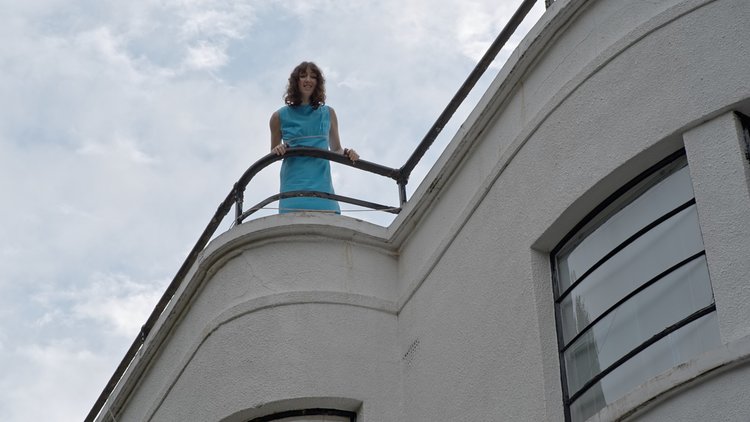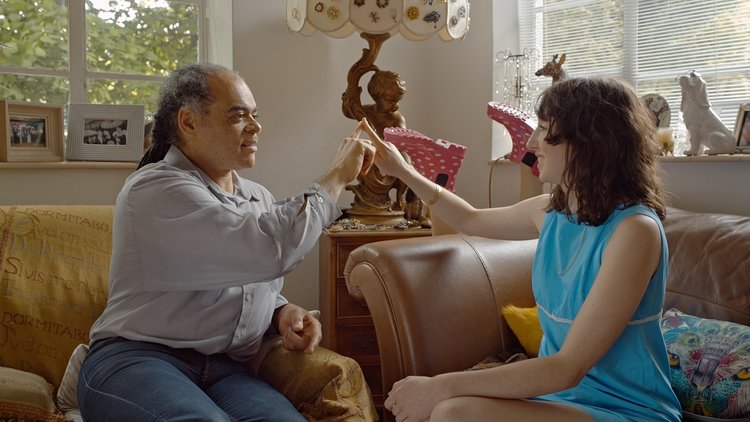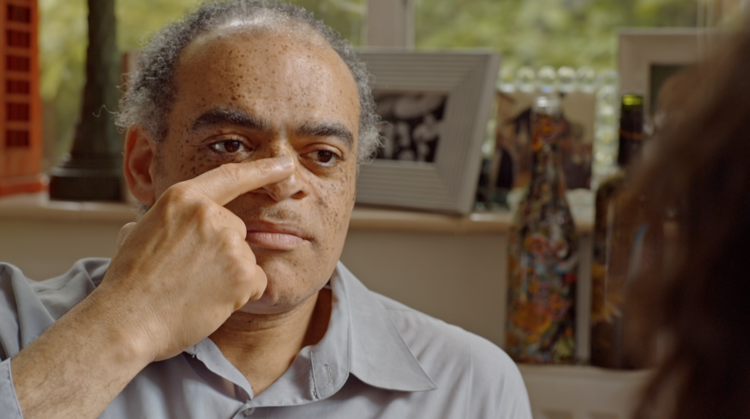Film by Tilly Shiner
Sound and Music by Sami El-Enany
A film about a woman who falls down whenever she wears the colour red. Based on a study by Kurt Goldstein on the physiological effects of colour on subjects with cerebellar disease.

The sound uses 'therapeutic' pink noise generated by natural processes (rainfall, waves, leaves rustling, heart rate rhythms) taken from youtube videos, intended for relaxation and inducing sleep. The music was made in reference to studies of the effects of music on heart rate and blood pressure. The study suggested that particular 10 second phrasing found in Va Pensiero by Giuseppe Verdi, Nessun Dorma ('None Shall Sleep') by Giacomo Puccini and Beethoven's 9th Symphony Adagio caused a fall in blood pressure and synching of the listener's heart rate. The overlapping of the visual and physical is examined using planned and improvised scenes which function somewhere between childhood games, therapy and co-ordination tests. Non-actors play the parts of a (nameless) man and woman who both have a different relationship to 'falling'; one physical and one imagined. The constant falling movement of the camera seeks to reflect this in the viewing of the work.



Film by Tilly Shiner
Sound and Music by Sami El-Enany
A film about a woman who falls down whenever she wears the colour red. Based on a study by Kurt Goldstein on the physiological effects of colour on subjects with cerebellar disease.

The sound uses 'therapeutic' pink noise generated by natural processes (rainfall, waves, leaves rustling, heart rate rhythms) taken from youtube videos, intended for relaxation and inducing sleep. The music was made in reference to studies of the effects of music on heart rate and blood pressure. The study suggested that particular 10 second phrasing found in Va Pensiero by Giuseppe Verdi, Nessun Dorma ('None Shall Sleep') by Giacomo Puccini and Beethoven's 9th Symphony Adagio caused a fall in blood pressure and synching of the listener's heart rate. The overlapping of the visual and physical is examined using planned and improvised scenes which function somewhere between childhood games, therapy and co-ordination tests. Non-actors play the parts of a (nameless) man and woman who both have a different relationship to 'falling'; one physical and one imagined. The constant falling movement of the camera seeks to reflect this in the viewing of the work.


